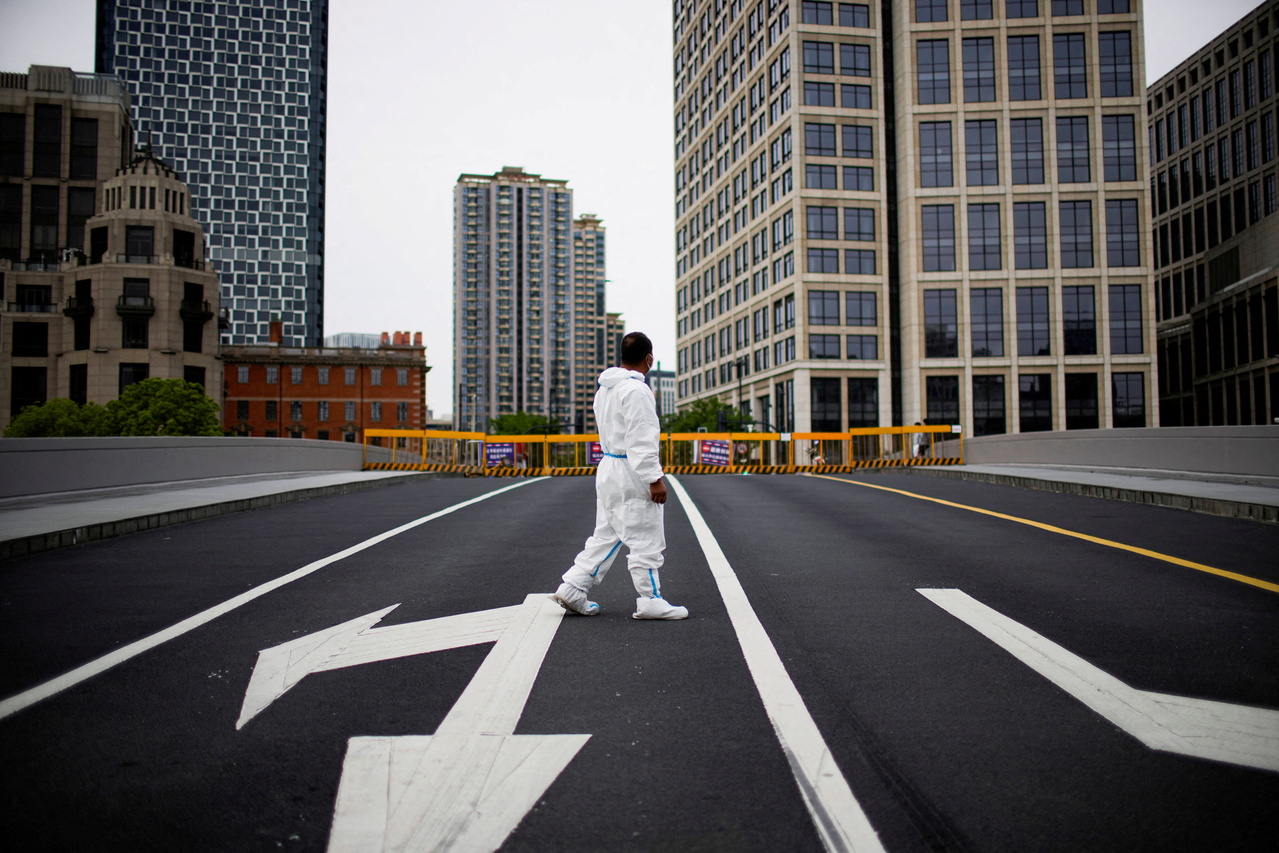China's stimulus tops $7 trillion as Covid-19-zero batters economy
Sign up now: Get ST's newsletters delivered to your inbox

China has come under immense pressure to meet its government's growth target of about 5.5 per cent for the year.
PHOTO: REUTERS
Follow topic:
BEIJING (BLOOMBERG) - China's plans to bolster growth as Covid-19 outbreaks and lockdowns crush activity will see a whopping 35.5 trillion yuan (S$7.3 trillion) pumped into its economy this year.
The figure - based on Bloomberg's calculation of monetary and fiscal measures announced so far - equates to roughly a third of China's US$17 trillion economy, but is actually smaller than the stimulus in 2020 when the pandemic first hit. This suggest that even more could be spent if the economy fails to pick up from its current funk - a possibility raised by Premier Li Keqiang earlier this week.
"The mainstay of policy this year is fiscal spending and government investment, while the central bank is only playing a supportive role so far," said Mr David Qu, China economist at Bloomberg Economics. "There is still a lot of space for a stronger fiscal policy, which is more effective in supporting growth now."
Bloomberg's calculation on the fiscal side adds China's general budget expenditure with the amount of money issued through local government special bonds and tax and fee cuts. Monetary policy support includes hundreds of billions of renminbi in liquidity unleashed by the People's Bank of China (PBOC) through policy loans and cuts to reserve ratios for banks, as well as cheap loans to help small businesses and green projects during the pandemic.
The world's second-largest economy has come under immense pressure to meet the government's growth target of about 5.5 per cent for the year. As Shanghai and other cities and regions locked down this spring to contain Covid-19 outbreaks, industrial output and consumer spending sunk to the lowest levels since early 2020.
While the authorities have promised to reach their economic goal, top leaders have also made it clear they are sticking with the Covid-19-zero approach, prompting skepticism among economists about whether Beijing can achieve both objectives at the same time.
The fact that most of the stimulus was announced at the annual session of the National People's Congress in early March, well before most of the lockdowns, suggests that the authorities may announce more measures as needed this year. However, the central bank is likely to move cautiously, wary of diverging too much from hawkish policies elsewhere to combat runaway inflation, or repeating a strategy akin to its response to the 2008 financial crisis, which led to soaring debt.
Whatever China puts up in support this year, it is still dwarfed by the massive stimulus plan that helped the economy return to its high-growth trajectory after the global financial crisis in 2008. The four trillion yuan in additional investment announced that year alone accounted for 13 per cent of the economy. The PBOC was also more aggressive during that period, cutting its benchmark lending rate by more than 200 basis points in a single year and bringing down the reserve requirement ratio by as many points.
"There are more challenges to shore up growth now than it was in 2008," Mr Qu said, adding that interest rate levels at the time were high, allowing the PBOC to unleash greater stimulus. Investing was also more attractive, as the economy was growing at a faster pace. The rest of the world was ramping up stimulus to shore up the global economy too.
Now, he said, "China is facing all these problems alone". Government-led investment is the "only thing that can be hoped for in the short term", he said.

